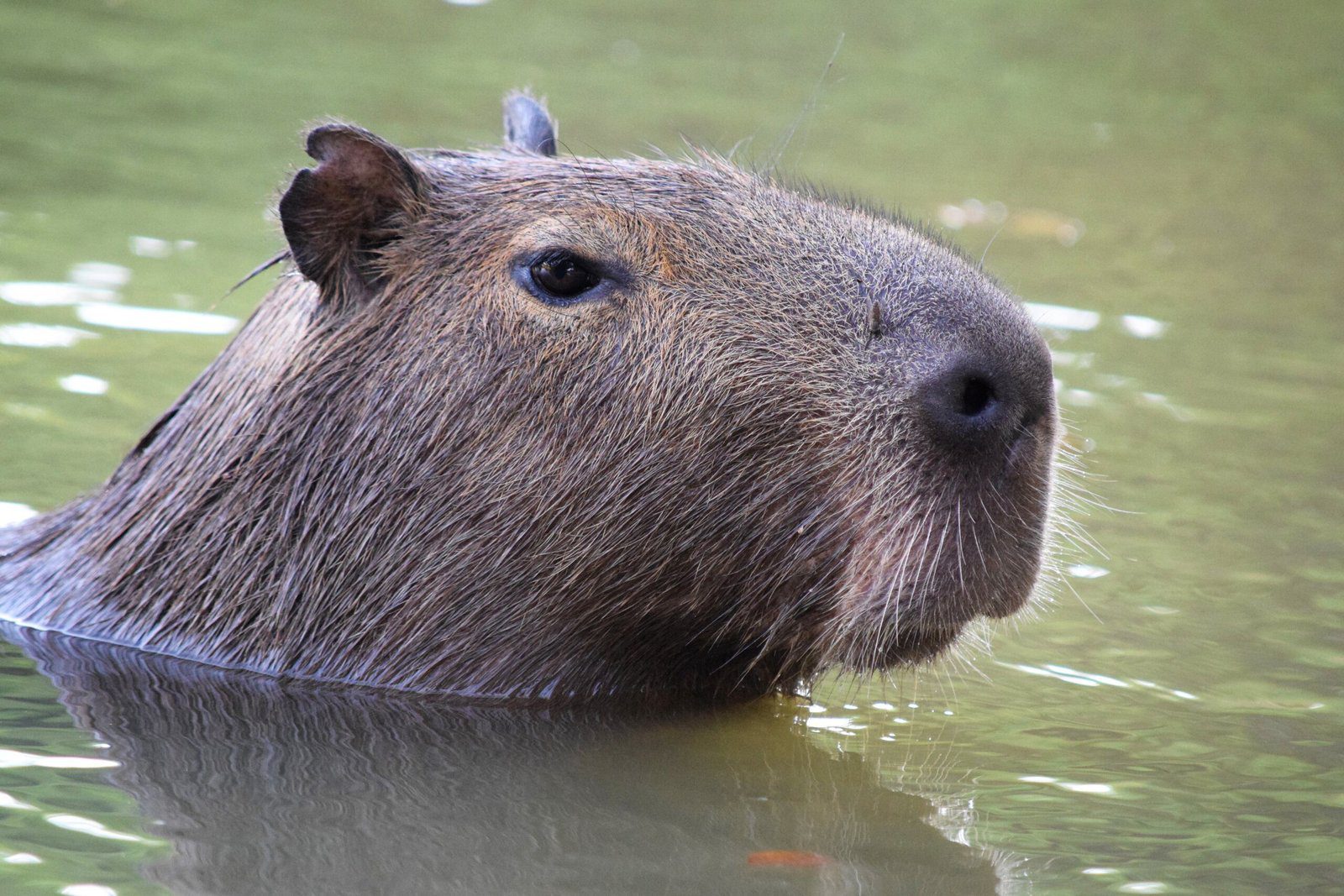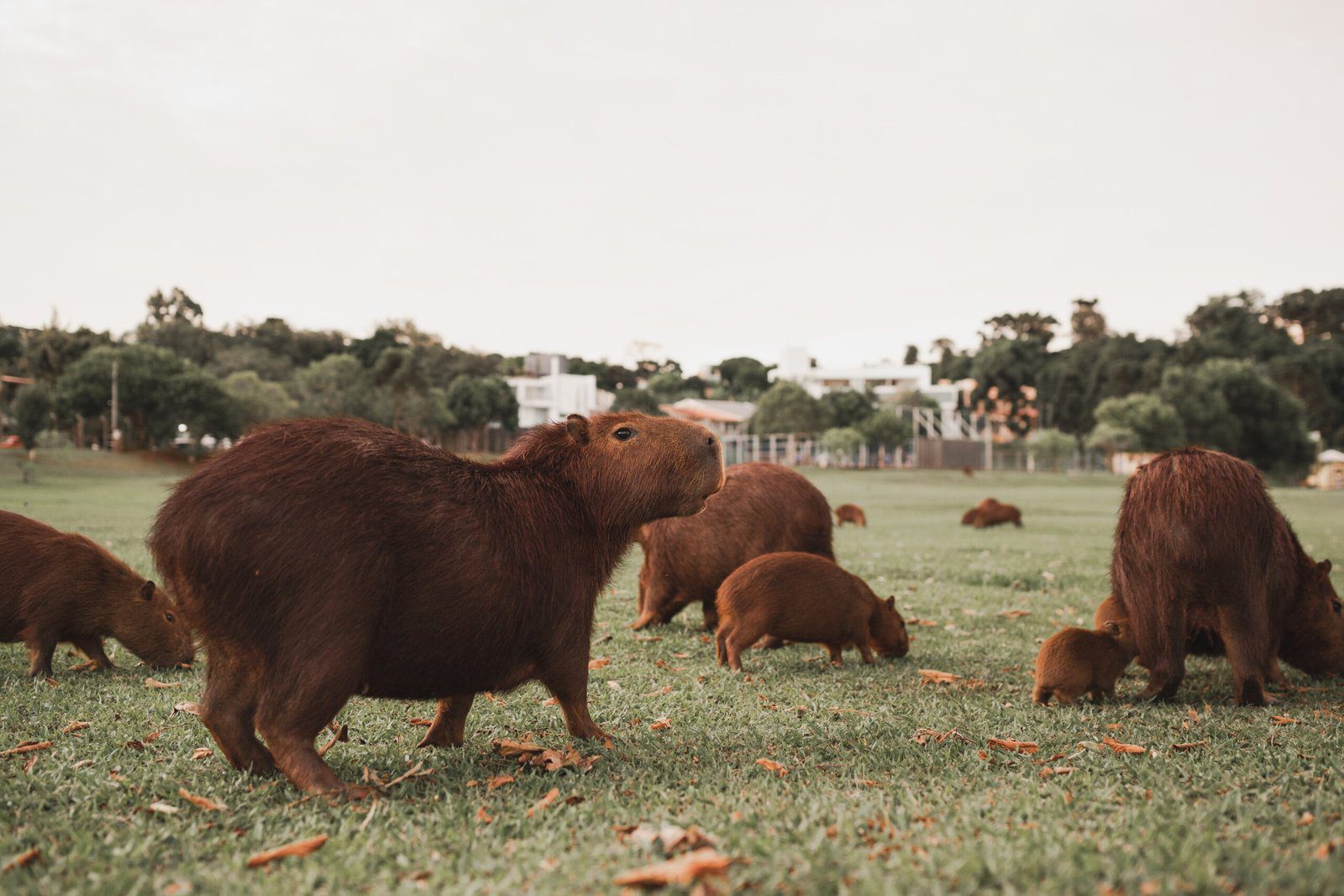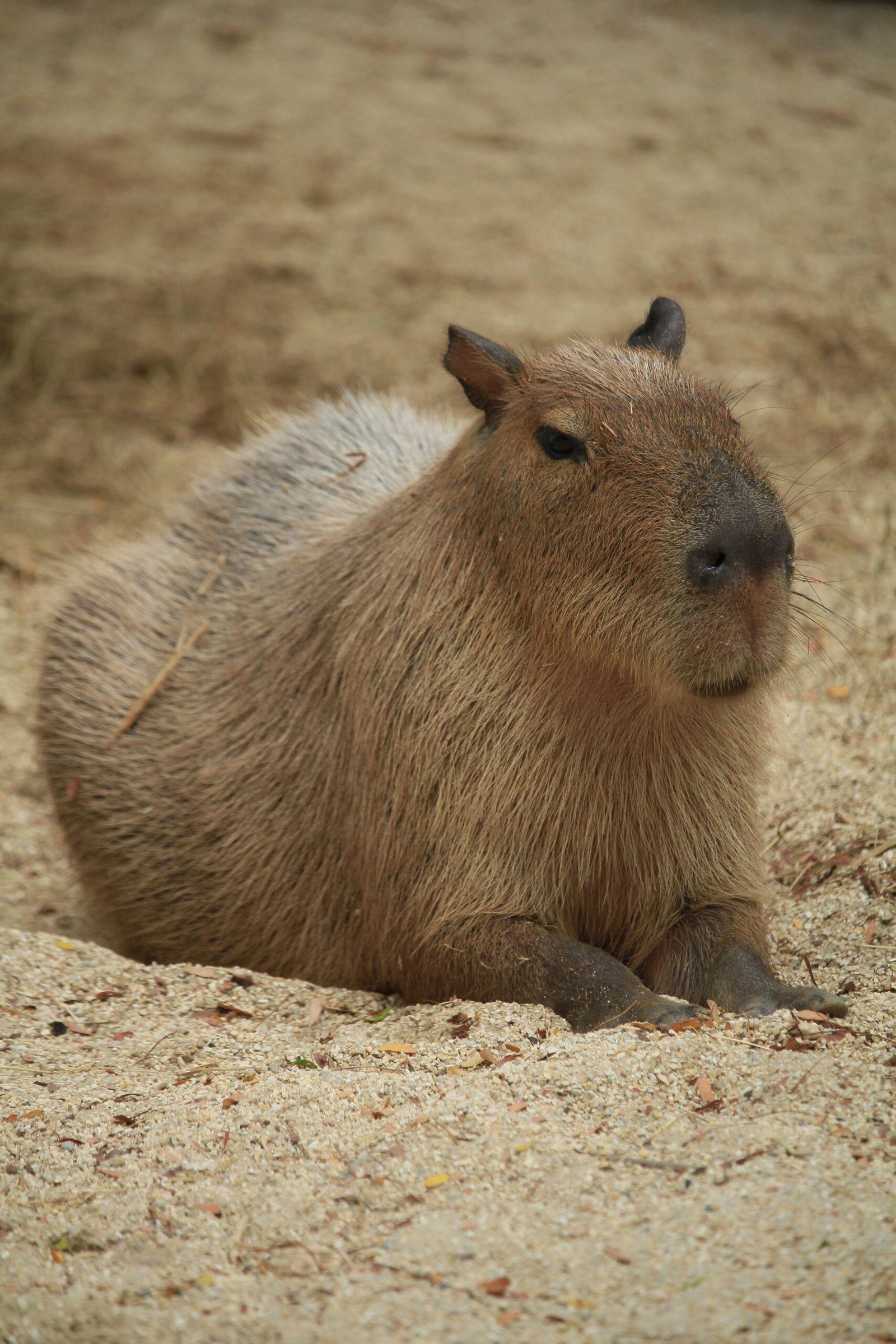Table of Contents
Enter the enchanting world of capybaras, the friendly giants of the animal kingdom. These remarkable creatures possess a rare talent for fostering harmonious relationships, effortlessly getting along with all other animals. Whether they are lounging by the water’s edge or embarking on playful adventures, capybaras exude an undeniable charm that captivates both humans and fellow creatures alike. Prepare to fall in love with these gentle giants and be amazed by their extraordinary ability to bring unity and joy wherever they roam.

Physical Characteristics
Size and Weight
Capybaras are known for their impressively large size. On average, adult capybaras measure around 3.3 to 4.4 feet (1 to 1.3 meters) in length and stand about 1.5 feet (0.5 meters) tall at the shoulder. They are the largest rodents in the world, with some individuals weighing up to 150 pounds (70 kilograms). Despite their size, capybaras have a slender and streamlined body that allows them to navigate through water with ease.
Appearance
With their round bodies and short legs, capybaras certainly have an endearing appearance. They have a stocky build, a large head, and small ears that are almost hidden beneath their thick fur. Their coarse, brownish-gray fur acts as a waterproof layer, enabling them to spend hours in the water. Capybaras also have webbed feet, which are ideal for swimming and maneuvering on wetlands. Additionally, they have blunt, chisel-like incisors that continuously grow, helping them maintain their herbivorous diet.
Adaptations
Capybaras have evolved several fascinating adaptations to survive in their diverse habitats. One of their key adaptations is their ability to stay submerged underwater for several minutes, efficiently avoiding predators. They can close their nostrils and ears to keep water out while their eyes remain above the surface, allowing them to spot any potential threats. Capybaras also possess a unique digestive system that aids in breaking down fibrous plant material. The fermentation process that occurs in their specialized chambered stomachs allows them to extract maximum nutrients from their herbivorous diet.
Habitat and Distribution
Native Range
Capybaras are native to the wetlands of Central and South America. They can be found in a variety of countries, including Brazil, Venezuela, Peru, and Paraguay. Their population is particularly dense in the Amazon rainforest, as well as the Pantanal region in Brazil, where their preferred habitats of open grasslands and dense vegetation are abundant.
Habitat Preferences
Capybaras are semiaquatic creatures that prefer to live near bodies of water, such as rivers, marshes, and swamps. These habitats provide them with the necessary resources, including food sources like aquatic plants and grasses. Moreover, the water offers them protection from predators and also aids in thermoregulation on hot days. They are highly adaptable and can be found in various freshwater environments, from tropical rainforests to savannas.
Global Distribution
Due to their wide-ranging distribution, capybaras can be found in a multitude of habitats across their native range in Central and South America. They are also prevalent in some parts of North America, having been introduced as exotic pets or established as feral populations. Their adaptability and ability to thrive in different environments make them a remarkable species in terms of their global distribution.

Social Behavior
Group Dynamics
Capybaras are highly social animals that thrive in large groups known as herds or colonies. These groups typically consist of around 10 to 30 individuals, but can sometimes exceed 100 members. The herds are composed of multiple adult males, females, and their offspring. Within the group, a dominant male, or alpha male, maintains hierarchy and decides the group’s movements. The strong social bonds within the herd are evident in their grooming rituals, where individuals help each other clean hard-to-reach areas.
Communication
Capybaras are quite vocal creatures, communicating through various vocalizations. They emit a wide range of sounds including barks, chirps, and whistles to convey different messages to their herd members. These vocalizations serve as a means of expressing distress, alarm, or communication during mating rituals. Capybaras also communicate visually through body language, such as low growls, raised crests on their hair, and even playful bouts of chasing and wrestling.
Parental Care
Capybaras exhibit strong parental care within their social groups. After a gestation period of around 150 days, female capybaras give birth to a litter of typically four to five offspring, known as pups. The young capybaras are precocial, which means they are born with eyes open and are able to move shortly after birth. However, they still rely heavily on their mothers for nourishment and protection. The entire herd assists in the care of the young, with multiple individuals taking turns in guarding and herding the vulnerable pups.
Diet and Feeding Habits
Herbivorous Diet
Capybaras are strict herbivores, with their diet primarily consisting of grasses, aquatic plants, and various types of vegetation. Their impressive incisors support the process of grazing on tough plant material. In addition to fresh plant material, capybaras also consume their own feces, a behavior known as coprophagy. This process allows them to extract additional nutrients from the partially digested plant matter, maximizing their energy intake.
Water-Based Feeding
With their semiaquatic lifestyle, capybaras have developed a unique feeding behavior known as “hakuna-matata,” where they graze on vegetation in and around bodies of water. They are able to submerge partially, with only their heads and torso exposed, to access tender aquatic plants. This feeding strategy not only helps them meet their nutritional needs but also keeps them cool during the hotter periods of the day.
Foraging Behavior
Capybaras are highly efficient grazers, capable of consuming large quantities of vegetation in a single day. They have strong jaws and sharp incisors that allow them to quickly crop and chew their food. Capybaras often feed in the early morning or late afternoon when the temperature is cooler and vegetation is at its most nutritious. Their foraging behavior plays a vital role in shaping their surrounding environment, as they can help control the growth of dense plant mass and prevent overgrowth.

Predators and Threats
Natural Predators
Capybaras have a few natural predators in their native habitats. Large predatory cats, such as jaguars and cougars, pose a threat to capybaras, particularly the young and vulnerable individuals. Additionally, crocodiles and anacondas are known to prey on capybaras, primarily when they venture near bodies of water or during the breeding season. Birds of prey, such as eagles and caimans, also pose a danger to capybaras, especially the smaller individuals.
Human Threats
While capybaras generally have a friendly nature and get along well with other animals, they face threats from human activities. Deforestation and habitat loss due to agriculture, urbanization, and logging are major challenges for capybara populations. Encroachment on their natural habitat disrupts their food availability and increases the risk of encounters with humans, leading to conflicts. Hunting and poaching for their meat, skin, and fat also pose significant threats to capybaras, especially in areas where they are considered a culinary delicacy.
Interaction with Other Species
Inter-Species Relationships
Capybaras are known for their amicable nature and often form intriguing relationships with other species. They are social animals that can be seen mingling with various birds, such as herons and ducks, as they share the same habitats. These birds are known to perch on capybaras’ backs, finding a comfortable place to rest while the capybaras benefit from having parasites, like ticks, removed. Capybaras also coexist peacefully with several species of fish and reptiles, forming unique ecological relationships.
Capybara Conservation
As capybara populations continue to face threats, conservation efforts have become crucial for their survival. Various organizations and governments are working towards protecting the habitats of these gentle giants and implementing initiatives aimed at reducing poaching. Educational campaigns and increased public awareness about the importance of preserving capybaras and their habitats are helping to secure their future. Conservationists are also focusing on sustainable land use practices to minimize habitat destruction and improve coexistence between humans and capybaras.
Domestication
Capybaras have not been traditionally domesticated like other animals, but their friendly and docile nature has led to an increase in their popularity as exotic pets in some parts of the world. Nevertheless, owning a capybara as a pet requires specialized care, ample space, and specific permits in most regions. It is important to note that responsible pet ownership and adherence to legal regulations are essential to ensure the well-being of capybaras and prevent the negative consequences of illegal wildlife trade.
Reproduction and Lifespan
Breeding Season
Capybaras have a defined breeding season that typically occurs during the rainy season when food is abundant. While the specific timing can vary depending on the region, it generally falls between late spring and early summer. During this period, both males and females become more active in seeking mates, initiating courtship rituals that involve vocalizations and physical displays.
Gestation and Birth
The gestation period of capybaras lasts for approximately five months, after which the females give birth to a litter of adorable pups. A typical litter consists of four to five young, but larger litters have been recorded. Female capybaras possess a unique ability called embryonic diapause, where the fertilized eggs can remain dormant for several months before implanting and developing. This allows them to time their births to coincide with favorable environmental conditions.
Lifespan
In the wild, capybaras have an average lifespan of around 8 to 10 years. However, with proper care, some individuals have been known to live up to 12 years or longer. Factors such as predation, disease, and availability of resources can influence their lifespan. In captivity, where capybaras are provided with veterinary care, a controlled diet, and protection from predators, they generally have a longer lifespan, often reaching their late teens or early twenties.
Cultural Significance
In Indigenous Cultures
Capybaras hold cultural significance for many indigenous communities in their native range. These gentle giants are often represented in indigenous folklore, where they are both revered and respected. In some cultures, capybaras are considered symbols of fertility, abundance, and harmony with nature. They play a role in traditional ceremonies and are sometimes associated with spiritual meanings, serving as a bridge between human and animal realms.
Wildlife Tourism
Due to their captivating nature and photogenic presence, capybaras have become an attraction for wildlife tourism in certain regions. Their relaxed and sociable behavior makes them fascinating subjects for photographers and nature enthusiasts. In areas where capybaras are readily visible in their natural habitats, eco-tourism activities, such as guided tours and photography expeditions, provide an opportunity for people to observe and appreciate these charismatic creatures, showcasing the importance of their conservation.
Interesting Facts
Capybara as Pets
Capybaras have gained popularity as unique and affectionate pets in some regions, garnering attention for their friendly demeanor and their reputation as the “dogs of the swamp.” However, keeping capybaras as pets requires specialized knowledge and a deep understanding of their complex social, dietary, and environmental needs. Responsible ownership entails providing them with ample space, access to water, and a herbivorous diet accompanied by regular veterinary care.
Guinness World Record
Capybaras have even made their way into the Guinness World Records, with the largest rodent title securely in their grasp. As these giant, lovable creatures continue to captivate the hearts of people around the world, they hold the distinction of being the true giants of the animal kingdom.
Conservation Status
Threats to Population
The capybara population faces a variety of threats that pose challenges to their long-term survival. Deforestation remains a significant threat as it rapidly reduces their natural habitats and restricts their mobility. Increased human activities in their native range also lead to conflicts, hunting, and illegal wildlife trade, which further impact their populations. Climate change and habitat degradation also have adverse effects, altering their ecosystems and disrupting ecological balance.
Conservation Efforts
To address these threats, numerous conservation efforts are in place to ensure the preservation of capybaras and their habitats. International organizations, governments, and local communities work together to implement sustainable land-use practices, reforestation initiatives, and educational programs. Protected areas and wildlife reserves are established for capybaras, allowing them to thrive and contributing to the overall conservation of their unique ecosystems. By raising awareness and fostering a harmonious coexistence between humans and capybaras, conservationists strive to secure a promising future for these friendly giants of the animal kingdom.

